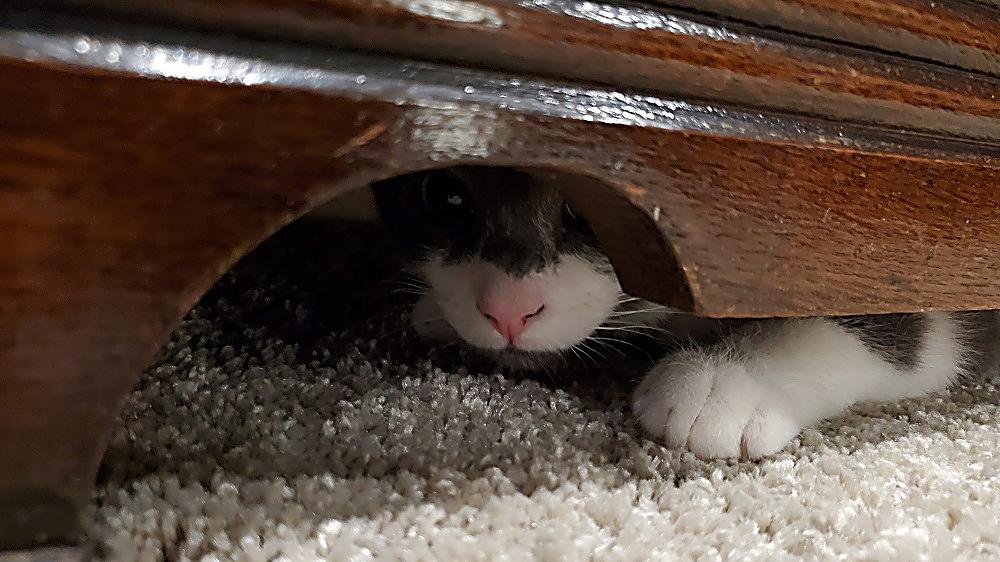If you’ve ever watched a kitten chase its own tail or try to climb a curtain, you know they’re little balls of instinct, curiosity, and chaos. But what you might not know is that the first few months of life are a critical time for cognitive development in kittens. During this window, their brains are soaking up information, building pathways, and learning how to interact with the world.
You don’t need flashcards or kitten-sized Sudoku puzzles, but you do need the right environment, activities, and toys to encourage healthy mental growth. We’re going to show you how to raise a smart, confident cat who can solve problems, navigate new situations, and entertain you in the process.
Why Early Mental Stimulation Matters
Kittens develop incredibly fast. In just a few short months, they go from blind, wobbly fuzzballs to independent, athletic little hunters. Their brains are developing just as quickly as their bodies, which means early-life experiences shape how they think, learn, and respond to the world around them.
Cognitive development influences:
- Problem-solving skills
- Socialization with people and other animals
- Confidence in new environments
- Ability to adapt to change
- Emotional resilience and stress tolerance
Without enough mental stimulation, kittens may become bored, anxious, overly dependent, or aggressive. By creating a stimulating environment, you’re helping build a brain that can handle life with grace, curiosity, and maybe even a little mischievous flair.
The Sensitive Period: Weeks 2 to 14
Kittens go through a “sensitive period” from about 2 to 14 weeks of age. This is when their brains are most impressionable, and the learning that happens during this time has lifelong effects.
Key milestones:
- Weeks 2 to 4: Eyes open, hearing improves, and they begin to respond to sights and sounds
- Weeks 4 to 8: Socialization begins, play behaviors develop, and they start exploring
- Weeks 8 to 14: Advanced play, problem solving, and confidence building
This is the time to introduce variety, positive experiences, and playful challenges to help shape a mentally balanced cat.
Play Is Brain Work (and Fun)
Play is how kittens learn about the world. It builds motor skills, hones hunting instincts, and helps develop judgment and coordination. But it also exercises the brain.
Types of play that support cognitive development:
- Object play: Batting, chasing, and pouncing on toys helps them learn cause and effect
- Social play: Wrestling with littermates or gentle games with humans teaches boundaries and emotional regulation
- Exploratory play: Navigating new spaces and textures boosts confidence and spatial awareness
The more types of play you offer, the more brain areas get involved. And the more varied and enriching their environment, the smarter and more adaptable they become.
Top Toys for Cognitive Development
You don’t have to buy out the pet store, but having a good mix of mentally stimulating toys can make a big difference.
1. Puzzle Toys
These toys dispense treats when solved or manipulated and help kittens learn patience, problem solving, and coordination.
Try:
- Rolling treat balls
- Slide-and-lift puzzles
- Stackable towers with balls inside
Make sure to start simple and increase difficulty as your kitten gets the hang of it.
2. Interactive Wand Toys
Feather wands, string toys, or motorized prey encourage tracking, leaping, and coordination. These are also great for teaching timing and practicing restraint (no, not everything needs to be pounced on immediately).
Use them to mimic real hunting patterns: stalk, chase, capture.
3. Cat Tunnels and Hideouts
These encourage exploration and build spatial memory. Kittens learn about inside vs. outside, open vs. closed, and safe vs. surprising.
Add a toy or two inside the tunnel to encourage curiosity.
4. Scent-Based Toys
Kittens experience the world with their noses as much as their eyes. Toys with hidden scents like catnip, silvervine, or safe herbal sachets stimulate olfactory learning and curiosity.
Rotate them often to keep the novelty fresh.
5. Crinkle Balls and Unpredictable Toys
Anything that makes a weird sound or moves in an unexpected way gives your kitten’s brain a tiny surprise party. These types of toys spark investigation and problem-solving.
Just make sure they’re safe and can’t be swallowed.
Social Interaction as Brain Fuel
Kittens who are handled gently and frequently by humans are more likely to be confident and affectionate adults. Social interaction with humans, littermates, and even other animals provides rich mental stimulation.
Tips for supporting social cognitive development:
- Use your voice: Talk to your kitten often using different tones and expressions
- Handle their paws, ears, and tail to normalize touch
- Invite friends or family over to expose them to new people (when vaccinated and safe)
- Gently introduce them to other friendly pets under supervision
Early social learning teaches communication skills, trust, and adaptability. These lessons stick with them for life.
Environmental Enrichment: A Playground for the Brain
Your home can be a mental gym if you set it up right. Creating a stimulating environment gives kittens room to explore, make choices, and practice critical thinking.
Try this:
- Create vertical spaces: Cat trees, shelves, or ramps allow them to move up and down and build confidence
- Rotate toys: Keep things novel by swapping out a few toys every few days
- Use cardboard boxes, paper bags, and safe household items: Kittens love turning everyday objects into obstacle courses
- Play the sounds of nature or quiet music: Exposure to new sounds builds auditory learning and tolerance
The more enriched the environment, the better your kitten’s brain will be at making connections and staying engaged.
Training Games for Tiny Brains
Believe it or not, you can train a kitten. In fact, the earlier you start, the easier it is. Simple training builds problem-solving skills, strengthens your bond, and gives your kitten a sense of accomplishment.
Start with:
- Target training: Use a wand or finger to teach your kitten to follow and touch a target
- Clicker training: Click and reward for behaviors like sitting, spinning, or coming when called
- Name recognition: Say their name, then give a treat when they respond
Short, frequent sessions work best. Keep it light, fun, and positive.
Recognizing When It’s Too Much
While kittens are little learning machines, they also need lots of rest. Overstimulation can lead to cranky behavior, stress, or even biting.
Signs of overstimulation:
- Sudden tail twitching or lashing
- Flattened ears or dilated pupils
- Quick mood shift from playful to aggressive
- Walking away or hiding
If you notice these, take a break. Let your kitten nap or relax in a quiet space before resuming play or training.
Final Thoughts
Supporting cognitive development in kittens is one of the most rewarding parts of raising a cat. You’re not just playing games or handing out toys. You’re helping shape a confident, curious, and mentally resilient feline.
With the right mix of kitten mental stimulation activities and toys that stimulate mental growth, you’ll give your kitten a strong foundation for a happy, well-adjusted adult life. And bonus: all that mental work often leads to longer naps, which means fewer curtain attacks and more peaceful afternoons for you.
So grab the wand toy, shake a crinkle ball, or build a cardboard fortress. Your kitten’s brain is ready for adventure.
Recent Posts
Your Cat Might Be a Furry Little Healer… or at Least a Fuzzy Alarm System If you’ve ever had your cat suddenly become extra clingy when you’re under the weather, you’re not alone. From...
Cats are experts at hiding things, socks under furniture, their disdain for your playlist, and, unfortunately, symptoms of illness. In the wild, showing weakness could make them a target, so even...


